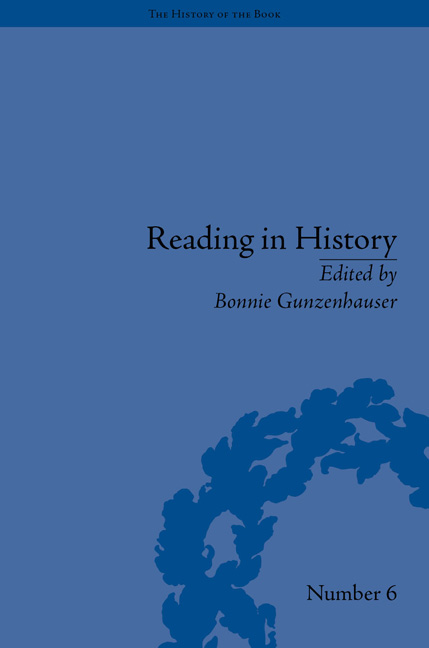Book contents
- Frontmatter
- CONTENTS
- Acknowledgements
- List of Contributors
- Introduction
- Section I Artefactual Methodologies
- 1 On the Use of Anecdotal Evidence in Reception Study and the History of Reading
- 2 Examining the Evidence of Reading: Three Examples from the Reading Experience Database, 1450–1945
- 3 Historical Dictionaries and the History of Reading
- Section II Paratextual Methodologies
- Section III Institutional Methodologies
- Notes
- Works Cited
- Index
2 - Examining the Evidence of Reading: Three Examples from the Reading Experience Database, 1450–1945
from Section I - Artefactual Methodologies
- Frontmatter
- CONTENTS
- Acknowledgements
- List of Contributors
- Introduction
- Section I Artefactual Methodologies
- 1 On the Use of Anecdotal Evidence in Reception Study and the History of Reading
- 2 Examining the Evidence of Reading: Three Examples from the Reading Experience Database, 1450–1945
- 3 Historical Dictionaries and the History of Reading
- Section II Paratextual Methodologies
- Section III Institutional Methodologies
- Notes
- Works Cited
- Index
Summary
Introduction
How can we know what historical readers thought about their reading? Since its inception as a field of scholarly enquiry, the history of reading has wrestled with the problem of finding representative evidence about the reading practices of historical readers. Research in the field has uncovered a plethora of different types of evidence: publication and sales statistics, lending library records, informal reading lists, educational syllabi, the notes of reading groups and also the material left by individual readers, including marginalia and annotations, diaries and journals, letters, autobiographies and memoirs.
An interdisciplinary field of study, the history of reading has grown considerably in the half-century since the publication of Richard D. Altick's The English Common Reader (1957). Scholars from a variety of different disciplines have shown an interest in what people read in the past and how they read it. In addition to conducting analyses of individual readers, reading groups and social classes, scholars such as Rolf Engelsing and Paul Saenger have sought to explain the evolution of reading and especially the connections between the peculiarities of reading in consecutive time periods, through a number of large historical frameworks. These grand narratives have tended to emphasize the decisive shift from reading aloud to reading silently (Saenger), and from intensive to extensive reading (Engelsing), during the post-Gutenberg proliferation of print and the rise of mass literacy in the late eighteenth century respectively. Period-specific studies have also argued for specific fashions or tastes in reading. Scholars have often turned to contemporary accounts of reading practice and the quantitative (though not necessarily hard) evidence of print runs and library borrowing records to chart the rise of fall of literary genres or the cultural impact of particular writers. Anecdotal and personal accounts of reading have often been given less weight, perhaps with some reason. Records kept by individual readers have oft en been regarded as too exceptional to offer useful conclusions about reading practice outside the specific cases concerned.
- Type
- Chapter
- Information
- Reading in HistoryNew Methodologies from the Anglo-American Tradition, pp. 29 - 46Publisher: Pickering & ChattoFirst published in: 2014



